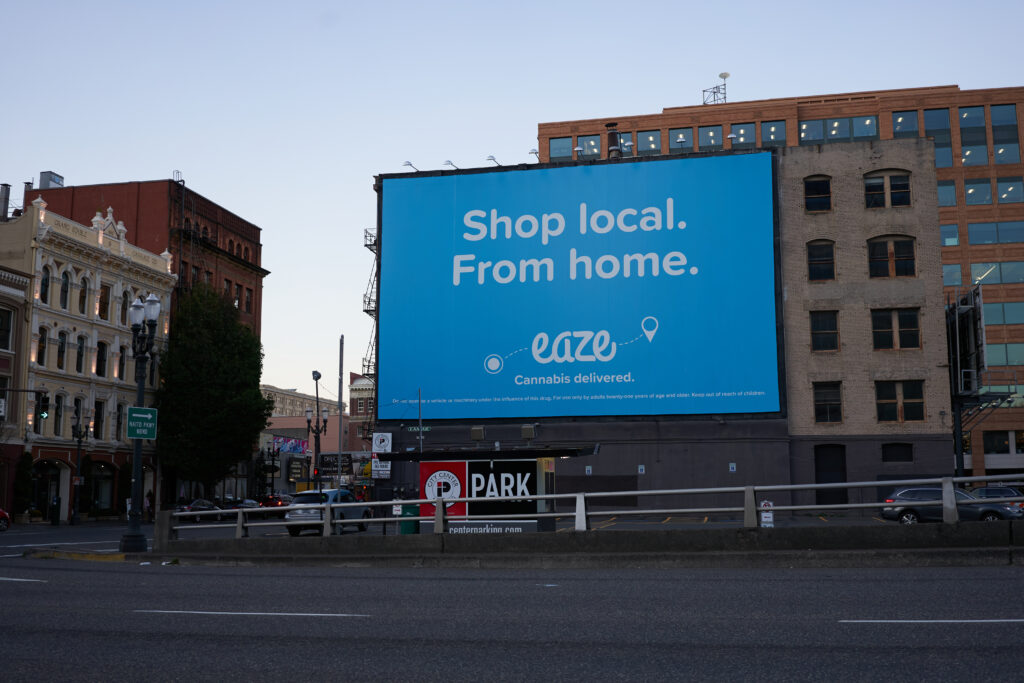
-
-
Products
- Industries
- Learn
- Partner
-
- Try Now
In the year 2017, the state of California transformed from a medical-use market to an adult-use market. The other states followed suit. The higher net worth investors and venture capital firms were busy figuring out how to take advantage of the millions of new customers now having access to a product that was always classified as a schedule 1 drug for over 50 years.
This was the time when start-ups such as Eaze grew their business. The cannabis delivery company utilized the promise shown by the boom in the cannabis industry to woo new investors.
About Eaze Cannabis Delivery
Keith McCarthy in the year 2014 created Eaze with the idea of being Uber of Cannabis. McCarthy was an earlier employer of Yammer. It was sold to Microsoft for $1.2 billion. In the second round of funding, Eaze raised $1.5 million followed by $10 million in 2015. After delivering cannabis to more than 200000 people in California in the year 2016, the company raised more than $13 million in Series B funding. But a year later the CEO and founder of Eaze Keith McCarthy stepped down as the CEO of the company.
During this period, Eaze was consuming a great deal of cash to finance the aggressive expansion plans. They turned to their investors once again for more funding. It was reported that the company was spending in the excess of $1 million every month. But they managed to grow their sales by more than 300% in one year before Eaze was successful in raising another $27 million.
Also Read
Top cannabis delivery business model that generates revenue
Eaze business model
Initially, Eaze concentrated on delivering medical cannabis and the company made money by charging a technology fee to the cannabis retail stores. The integrated business model provided an advertising space apart from charging the brands for their premium placements. The drivers that delivered the cannabis products for Eaze were paid by the cannabis retail stores directly. Or, they were paid by brands whose products they delivered.
Challenges
During the earlier years, Eaze suffered some major setbacks. Apple announced in June 2019 that it will not allow cannabis companies to sell their products from their app. This was after a similar announcement from Google. Another major DTC cannabis brand in California that worked with Eaze announced that they will not be working with Eaze anymore was Caliva. Caliva is now competing with Eaze moving forward as they developed their own DTC operations in the state.
In the year 2017, Eaze announced that it will sell $1 billion worth of cannabis by the year 2020. This was expected to be achieved by expansion into many other states. The company raised an extra $65 million in Series C funding in 2018 December. All this resulted in the company valuation rising to $400 million. In 2020 the company was working under the management of a new executive team.
After providing a series of layoffs, Eaze was successful in selling $190 million worth of cannabis products. Eaze was successful in laying off 36 employees and the CEO Jim Patterson also resigned from his position.
Also Read
Leafly Business Model and Revenue Insights
Even after this, Eaze kept on burning cash at an alarming rate. CEO of Eaze Rogelio Choy decided to go for it during this period. The company at this point was delivering cannabis products for different cannabis retailers and direct to consumer cannabis brands they tied up with. Now, Eaze decided to deliver its brand of cannabis products. Until then they had invested a great deal in establishing their market fitness.
They invested in developing a huge and loyal customer base. Eaze became the largest marketplace for the delivery of cannabis products in California. Now, they were looking to make the Eaze business model work more profitably and sustainably. For completing the pivot Eaze bought some assets of a bankrupt cannabis producer called DionyMed.
Results of the move
Credit must be given where it is due. The decision of Rogelio Choy to go all out for it and become a vertically integrated cannabis product organization ended up paying massive dividends. Even though Eaze has not shared any info about its growth or raised profit margins after making the move, one thing is certain. The company has been successful in doubling its valuation without having explosive growth. You need to admit the metal of a company that just refuses to give up. Despite the number of mistakes made by Eaze, the organization is back on track.
Series D funding in 2020 and the Verticalization model
In the year 2020, Eaze claimed to have close to 600000 registered customers and have completed more than five million legal deliveries. They confirmed that they received a $15 million bridge round and another $20 million in a Series D funding round as business accelerators. A total of $35 million in funding was received.
Eaze was planning to use the money for steering away from the original pure marketplace model. In the original model, the company worked with third parties for sourcing their cannabis products for delivery. The company veered away towards a strategy that is based on verticalization.
Now Eaze’s vertically integrated business model would be running retail and distribution operations on its own. They were to work with around 100 licensed brands for resale through retail partners. Eaze CEO Ro Choy said in a statement that verticalization was the second act of Eaze business model.
Also Read
On-demand economy: A short-term trend or a high-time revolution
The series D funding for the company will come from an investor group led by a company called FoundersJT LLC. The bridge round of the funding will come from DCM and Rose Capital who were both earlier investors. Eaze had announced that it had a provision for another Series D funding of $20 million.
This news brought a bit of resolution for the start-up after a troubled period. During the layoffs, the company lost several key personnel such as its CSO (Chief Strategy Officer), chief of staff, and many members of the engineering staff.
Eaze business model and the legalization swing
Eaze is busy trying to tap new opportunities to sell cannabis products to a new class of customers. These are clients that were not keen to buy these cannabis products when they were illegal. Another section of the clientele was the semi-regular or regular user that was happy to pay more for the utilization of a cannabis delivery app and getting a delivery.
The company believed that the move by the state of California to legalize cannabis products was a start for a larger swing. So, it projected the prospective growth suitably. Eaze was the first cannabis start-up that succeeded in raising money from Silicon Valley VCs.
However, everybody is aware that the early mover is not always in the best position in the world of the tech business. The legalization swing did not turn out the way Eaze had envisaged. Therefore, all the nationalization plans of the company had to be curtailed.

At the same time, the company was struggling to deal with basic problems faced by all e-commerce outfits such as logistics, customer acquisition, talent acquisition, and scaling of the business. As we saw earlier, Eaze had to face a number of these challenges in its tenure.
Some of the problems faced by Eaze were regarding the payment acceptance. Most credit card companies were not keen to permit the cannabis company to accept credit card payments. Therefore, for a brief period the delivery service operated by using a cash-only model. But this model is notoriously prone to fraud, errors, and many other issues.
They had to face negative margins while reselling the cannabis products of other retailers. Keep in mind that legalization meant there was a lot of product and pricing competition while acquiring new customers.
Conclusion
Despite all the problems faced by the Eaze business model and the circumstances they had to face; the business is growing. It is one of the main reasons why the investors believe that there is something worth investing in the company. In 2019, the company observed a 97% rise in new sign-ups.
All the figures depicted a rise in the company’s clientele. One thing is certain. The company has survived the troubled times and is looking good for the future.
If you also wish to build an online marketplace for your cannabis delivery business visit Jungleworks for expert advice.
Subscribe to stay ahead with the latest updates and entrepreneurial insights!

Subscribe to our newsletter
Get access to the latest industry & product insights.






















